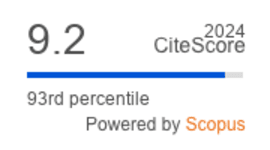Clinical Applications of Probiotics in Atopic Dermatitis
DOI:
https://doi.org/10.36877/pmmb.a0000473Abstract
Atopic dermatitis (AD) remains challenging to manage due to its chronic inflammatory nature, often requiring long-term treatment approaches. While current therapies provide relief for many patients, they can sometimes cause unwanted side effects. This has led to a growing interest in complementary treatment options. Probiotics have gained increasing attention due to their potential to modulate the gut-skin axis, restore microbial balance, and regulate immune responses. Recent clinical trials suggest probiotics may alleviate AD symptoms by correcting gut microbiota dysbiosis and enhancing immunoregulation. However, the efficacy of probiotics is influenced by several factors, including strain specificity, timing and duration of administration, and dosage. Although promising, current evidence remains insufficient to recommend probiotics as standard treatment for AD. Significant variability in clinical study designs and outcomes highlights the need for more robust, well-controlled clinical trials. This review explores the underlying pathophysiological mechanisms of AD, focusing on the role of microbiota and immune dysfunction, and reviews recent probiotic interventions. It further emphasizes the need to identify specific bacterial strains and optimize probiotic formulations for therapeutic use. Understanding of the roles of gut microbiota in AD pathogenesis could pave the way for developing effective probiotic therapies as part of an integrated management strategy for AD.
Downloads
Published
How to Cite
Issue
Section
License
Copyright (c) 2025 Tze Yi Tay, Meghan Yin Zhi Wong, Ai Sze Wee, Jodi Woan-Fei Law, Loh Teng-Hern Tan, Hui Xuan Lim

This work is licensed under a Creative Commons Attribution-NonCommercial 4.0 International License.
Author(s) shall retain the copyright of their work and grant the Journal/Publisher right for the first publication with the work simultaneously licensed under:
Creative Commons Attribution-NonCommercial 4.0 International (CC BY-NC 4.0). This license allows for the copying, distribution and transmission of the work, provided the correct attribution of the original creator is stated. Adaptation and remixing are also permitted.

This broad license intends to facilitate free access to, as well as the unrestricted reuse of, original works of all types for non-commercial purposes.
The author(s) permits HH Publisher to publish this article that has not been submitted elsewhere.



.png)

.jpg)
